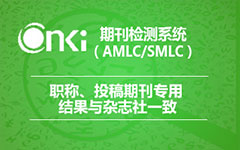从目的论看电影《实习生》的字幕翻译策略
随着中国与西方国家间的文化交流越来越频繁,大量西方电影涌入中国。由于中西方文化和语言上的差异,字幕翻译就显得尤为重要,字幕翻译的质量直接影响到目的语观众对西方影视作品的理解和欣赏。字幕翻译虽然仍然是文学翻译一个新的翻译领域却是现代重要的交际工具。虽然欧洲学者已对字幕翻译的分类和定义做了许多理论探讨,但中国在这方面的研究还比较少。根据目前字幕翻译的现状来看,字幕翻译质量还有待提高。
目的(功能)是在空间和时间的制约下,向处在特定文化背景的目的语观众最有效地进行相关信息的传达,让他们能够更好的欣赏影视作品。鉴于中英文在语言和文化上存在许多差异,翻译人员在翻译过程中首要考虑因素就是译语文化背景和目的语观众的期待。本文试图从目的论角度探讨电影《实习生》的中文字幕从而分析探讨外国影片中英汉翻译问题。
是在空间和时间的制约下,向处在特定文化背景中的目的语观众最有效的传达相关的信息,使其更好地欣赏影视作品。因为中文和英文在语言和文化上存在着差异,译语文化背景和目的语观众的期待成为译者在翻译过程中首要考虑因素。因此,本文试图从目的论角度探讨电影《实习生》的中文字幕。本文采取定性分析方法,探讨外国影片中英汉翻译策略问题。
通过研究,电影《实习生》的字幕翻译符合目的论三原则:目的原则,连贯原则,忠诚原则的要求。 在翻译技巧上,主要使用了增译法, 减译法,倒置法,直译法和意译法并且使用了中国的成语和方言的词汇。从字幕翻译的功能和翻译的目的来看,目的论适用于电影字幕翻译。
关键词: 目的论;字幕翻译;电影《实习生》;翻译策略
Abstract
Thanks to the frequent cultural exchange between China and western countries, a lot of western movies are poured into China. Since the Chinese culture and language have a lot of differences from that of the western countries, subtitles translation is particularly important. The quality of Subtitle translation directly affects the target language audiences’ understanding and appreciation of western movies and television works. Although subtitle translation is still a new field of literature translation, however, an important modern important communication tool. As for the classification and definition of subtitle translation, European scholars have done a lot of theoretical discussions but in China that kind of studies are less. According to the current situation of subtitle translation, subtitle translation quality needs to be improved
The skopos (function) of subtitle translation is to convey the important information about the movies to target audience in a specific culture in the most efficient way under the restriction of space and time, which can help the target audiences better understand and appreciate the movies. Because there are lot of cultural and linguistic differences between Chinese and English, the target culture circumstances as well as the expectation of target audience have become subtitle translators' first concern in the process of translating. This paper will discuss the Chinese subtitle translation of the Intern from the perspective of skopostheorie. It takes a quantitative analysis method and through analysis of chosen examples, it explores problems of E-C translation in foreign movies.
Through research, we can find that subtitle translation of the Intern is in line with the requirements of the three principles of skopostheorie: skopos rule, coherence rule and fidelity rule. As for the translation skills, there are addition and explication, reduction, frequent using of dialectal lexis, Inversion method, frequent use of Chinese four-character phrases , free translation and literal translation. Skopostheorie is feasible to subtitle translation from the perspective of the function of subtitle translation and skopos of translation.
Key words: Skopostheorie;subtitle translation;The Intern;translation strategies
Contents
毕 业 论 文 I
- 1. Subtitle translation 1
1.1 Definition of subtitle translation 1
1.2 Features of subtitle translation 2
1.2.1 Popularity 2
1.2.2 Synchronization 2
1.2.3 Colloquialism 2
1.2.4 Instantaneousness 2
- 2. Skopostheorie 3
2.1 Background of skopostheorie 3
2.2 Basic concepts of skopostheorie 4
2.3 Rules of skopostheorie 4
- 3. Literature review 5
3.1 Overseas research>
4.1 Brief introduction to the Intern 7
4.2 Feasibility of applying Skopostheorie to subtitle translation 7
4.3 Subtitle translation strategies in the Intern from the perspective of skopostheorie 8
4.3.1 Frequent use of dialectal lexis 8
4.3.2 Inversion 10
4.3.3 Frequent use of Chinese four-character phrases 11
4.3.4 Literal translation 12
4.3.5 Free translation 13
4.3.6 Addition and explication 14
4.3.7 Reduction 14
- 5.Conclusion 15
References 17
Introduction
Nowadays, the world change rapidly, and globalization has become an irreversible trend. In the circumstances of globalization, when the interdependence of economies and the word trade are developing rapidly, both impacting and culture communicating are becoming more and more frequently than ever at the same time. And the entertainment industry is no exception. A mass of western movies have been poured into China and have played a significant role in the cultural communications between China and western countries. Thanks to the various means of communication and the popularization of the Internet, the number of Chinese people who are interested in western movies has increased rapidly these years. There are a lot of Chinese who are not good at English rely>
2.1 Background of skopostheorie
In the late 1970s and early 1980s, Reiss and Vermeer in Germany first proposed that Skopostheorie means an approach to translation, and then Hans J. Vermeer has gone much further in bridging the gap between theory and practice. Justa Holy-Manttari and Christiane Nord developed it. As Vermeer puts out, the purpose (skopos) of the overall translation action is the prime principle determining any translation process. Or to put it another way, "the ends justify the means" (Reiss &Vermeer, 1984:101). And the prime rule that translators should abide by is skopos rule and skopos here mainly refers to the communicative function of the target text.
2.2 Basic concepts of skopostheorie
The skopostheorie draws inspiration both from movements in literary studies and communication theory. Text theory and action theory is regarded as the core of functionalism. In the late 1970s, the skopos rule was developed in Germany, and is an important functionalist theory of translation.
It is necessary for us to understand the key concepts about the skopostheorie if we want to avoid some confusions and misunderstanding. According to Vermeer (2001), there are three kinds of purposes exist in the field of translation: the first is the general purpose, which is aimed at by the translator in the translation process, the second is the communicative purpose, which is aimed at by a target text in the target situation, the third is the purpose aimed at by a particular translation strategy or procedure. And the prime principle determining any translation process is the purpose of the whole translation.
Vermeer uses aim, purpose, intention and function in his theory. There are some differences among these concepts. Aim and purpose are two relevant concepts. Aim is an agent intending to achieve through an action. Purpose is considered as a transitory stage in obtaining an aim. Function refers to what text means or is intended from the receiver's standpoint. Intention is equal to the function of the action while talking about the concepts. As an aim-oriented plan of action, intention is proved to be very useful in translation studies. According to Christine Nord (1997), we should view function and intention from two different perspectives in translation. Christine Nord (1997) indicates that intention is sender-oriented, and it means that it is based>
3.1 Overseas research on subtitle translation
The western countries are the first to lead the way of the development of subtitle translation. Western subtitle translation can be traced back to the late 1950s and early 1960s. The first academic article to study film translation from a translation perspective appeared in the late 1950s and early 1960s. Later, Dollerup(1974) published his article On Subtitles in Television Programme on the magazine Bable, and analyzed different mistakes in translating TV programme into Danish in details. Dollerup (1974) pointed out applying subtitle translation into teaching could help students learn foreign languages. Titford (1982) published Subtitling: Constrained Translation and he thought that the major problems the film translators faced with were the restriction of time and space. Istvan Fodor is the leading person of audiovisual translation, whose study is said to have laid the foundation for western audiovisual translation. In 1905, audiovisual translation welcomed its "golden age" during which period the theoretical research of audiovisual translation had make breakthrough. In 1991, with the support of European Institute for the Media, Luyken together with other four experts on audiovisual translation published Overcoming Language Barriers in Television: Dubbing and subtitling for the European Audience. In this book, the author analyzed the different styles of transferring languages in film dubbing professionally. Western audiovisual translation has reached the era of rapid development after 1995. Gottlieb, a scholar who has formed the most systematic theory in audiovisual translation, bases on the Danish subtitling of English language TV as an object in his book Anglicisms and TV Subtitles in an Anglified World. Gottlieb (1993)puts forward four means of subtitle translation in the book.


